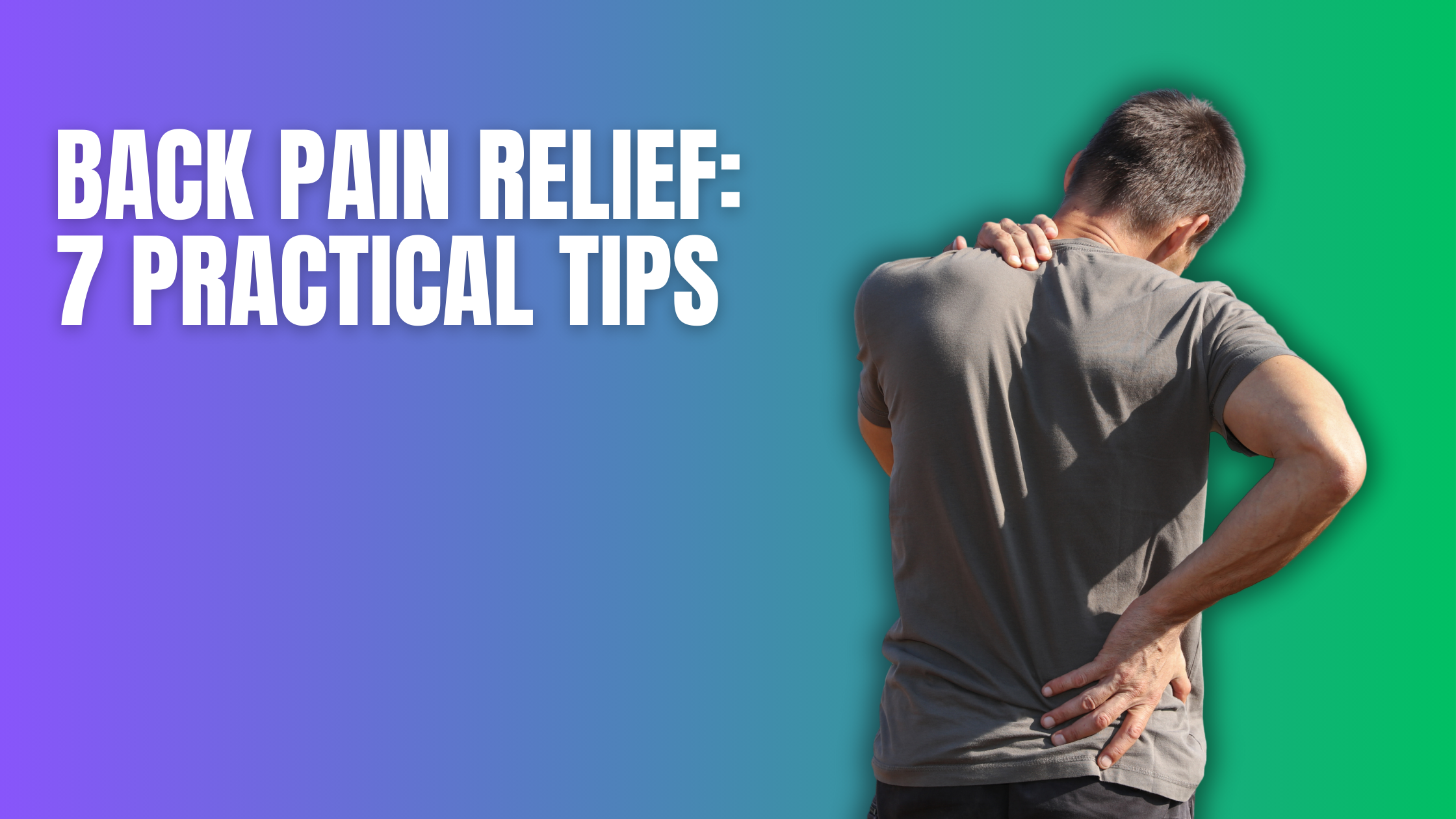Back Pain Relief: 7 Practical Tips for a Comfortable Life
Back Pain Relief begins with simple, actionable steps. Explore seven essential tips, including posture, activity, and ergonomics, to significantly reduce discomfort and improve back health, ensuring a pain-free lifestyle.
Nowadays, people of old age aren’t the only ones who experience back pain–it has become a common ailment present in any age group. This may significantly impact daily routine, from simple tasks to more active pursuits. Whether caused by poor posture, muscle strain, or underlying conditions, finding relief from back pain is a top priority for many. While various medical interventions are available, incorporating practical tips into your routine can provide effective relief. Let’s explore seven valuable tips to help alleviate back pain, enabling you to enjoy improved comfort and mobility based on research.
Maintain Good Posture
Proper posture is essential for preventing and relieving back pain. Whether sitting, standing, or walking, make a conscious effort to maintain a neutral spine position. Sit with your back against the chair, feet flat on the floor, and shoulders relaxed. Stand with your weight evenly distributed on both feet and maintain a straight posture, avoiding slouching. This will help you maintain good posture and avoid causing strain or discomfort to your body.
Stay Active
Engaging in regular physical activity can be beneficial for strengthening the muscles that support your spine. Low-impact exercises like swimming, walking, and gentle stretching can improve flexibility, reduce muscle tension, and enhance overall spinal health. Always consult your doctor before starting any new exercise routine, especially if you have an existing medical condition.
- Lift with Care: Improper lifting techniques commonly cause back pain. When lifting objects, bend at your knees and hips, not your waist. Keep the object close to your body, engage your core muscles, and avoid twisting while lifting. If an object is too heavy, feel free to ask for assistance.
- Invest in the Right Mattress: Your mattress can significantly impact your back health. A medium-firm mattress provides support and comfort, promoting proper spinal alignment during sleep. If you’re experiencing back pain, consider investing in a mattress that caters to your needs and sleep preferences.
- Use Supportive Footwear: Believe it or not, your shoes can affect your back health. Opt for footwear that provides proper arch support and cushioning. If you have specific foot issues, such as pronation, consult a podiatrist or orthopedic specialist to determine the best type of shoe for your needs.
- Consider Alternative Devices: Alternative devices can offer relief from back pain. Orthotic insoles, for example, can provide additional arch support and correct pronation, reducing strain on the back. TENS units deliver low-voltage electrical currents and can help disrupt pain signals and provide temporary relief.
- Prioritize Ergonomics: Creating an ergonomic environment is essential for back health, whether at home or in the office. Adjust the height of your chair and computer screen to promote proper posture. Use lumbar support cushions to maintain the natural curve of your lower back while sitting for extended periods.
Consultation with Healthcare Professionals
While these practical tips can provide significant relief, it’s important to remember that various factors can cause back pain. Consulting healthcare professionals, such as doctors, physical therapists, or chiropractors, is essential for accurate diagnosis and personalized treatment plans. If your back pain is accompanied by symptoms like numbness, tingling, or weakness, seeking medical attention is crucial.
Additionally, if you have conditions like osteoporosis or herniated discs, it’s advisable to consult your doctor before trying alternative devices or new exercises. These professionals can provide tailored guidance to ensure your approach to pain relief is safe and effective.
Incorporate Tips into Your Daily Routine
Incorporating these practical tips into your daily routine can gradually alleviate back pain and improve overall well-being. Remember that consistency is key—adopting these habits as part of your lifestyle can positively and last impact your back health.
Moreover, when seeking alternative devices or solutions, ensure they are high-quality and recommended by reputable sources. Your health is paramount, so make informed decisions when exploring different pain relief methods.
Back pain doesn’t have to control your life. You can significantly reduce discomfort and improve your back health by implementing practical posture, activity, and ergonomics tips. Prioritize maintaining good posture, staying active, and using proper lifting techniques to prevent strain on your back muscles.
Factors like the right mattress and supportive footwear can improve your overall comfort. Exploring alternative devices, in consultation with healthcare professionals, can also offer relief and complement traditional treatments. Remember that every individual’s journey to alleviating back pain is unique. What works best for one person may vary for another. Be patient with yourself, listen to your body, and make choices that prioritize your well-being and long-term health.

